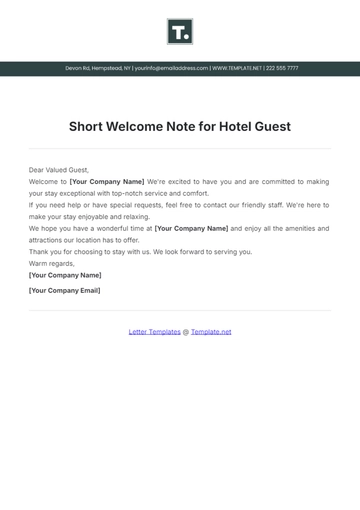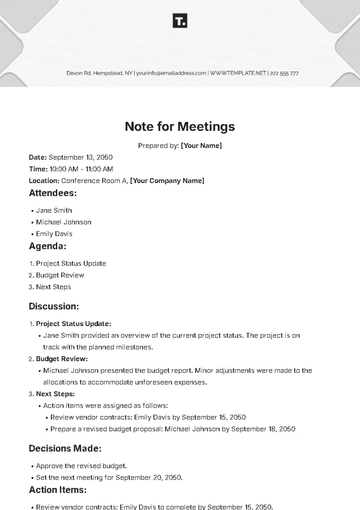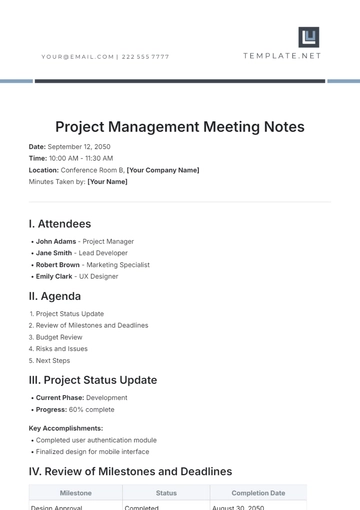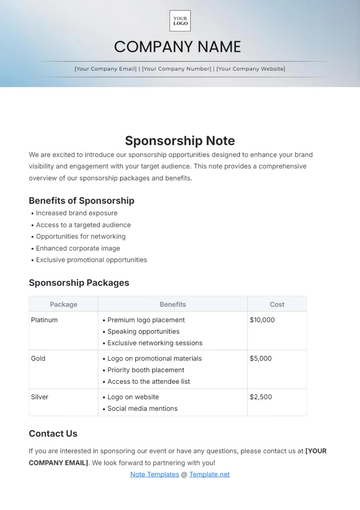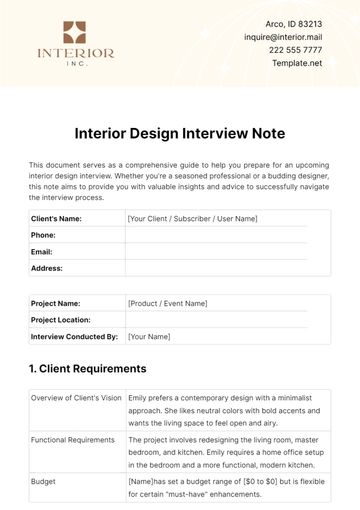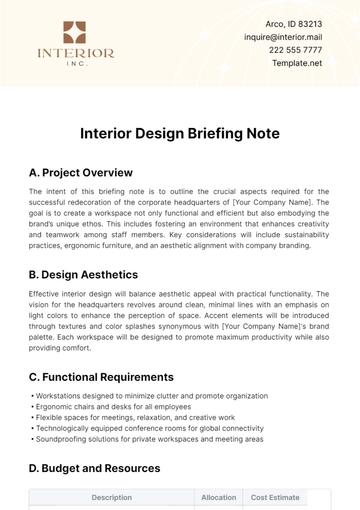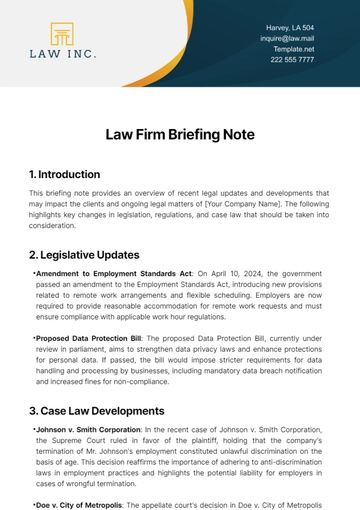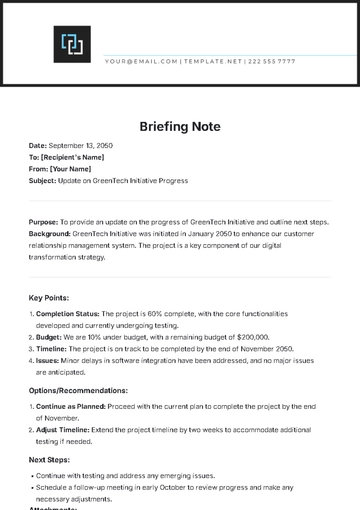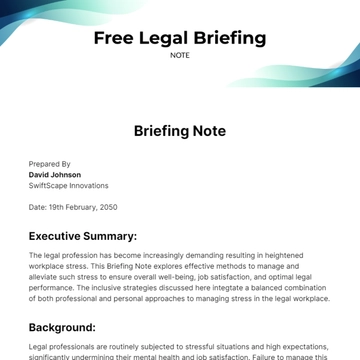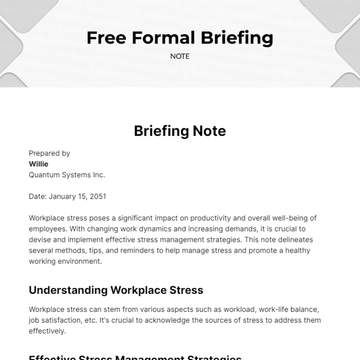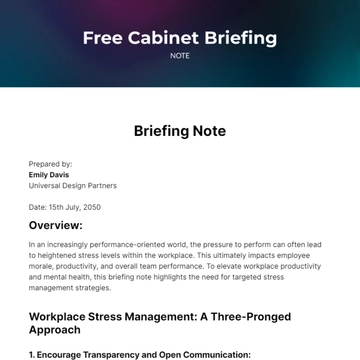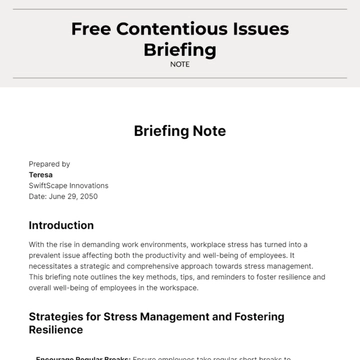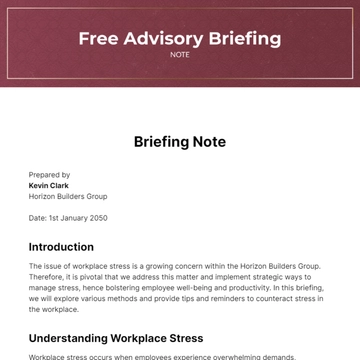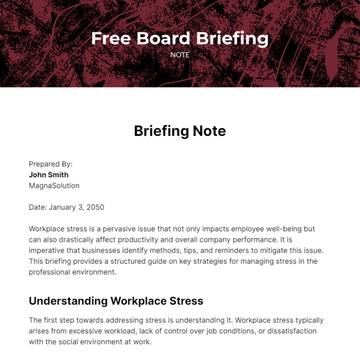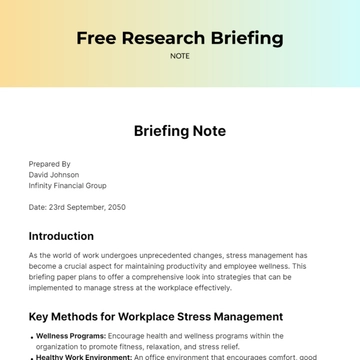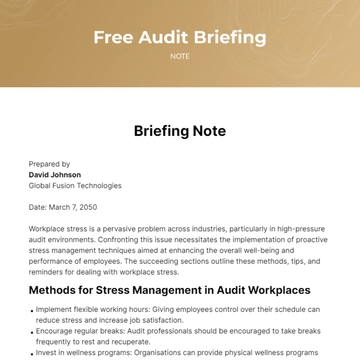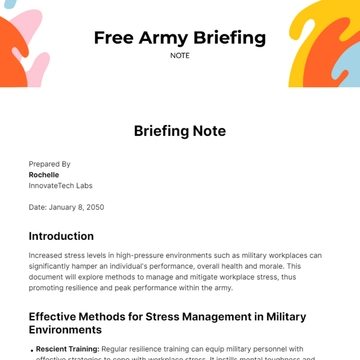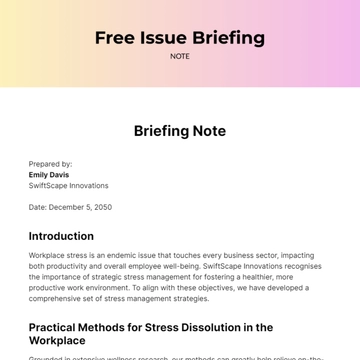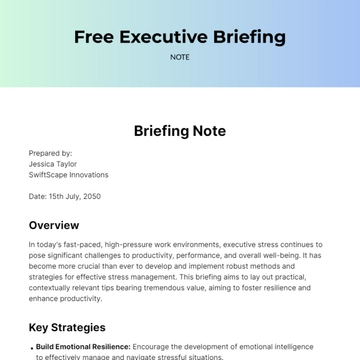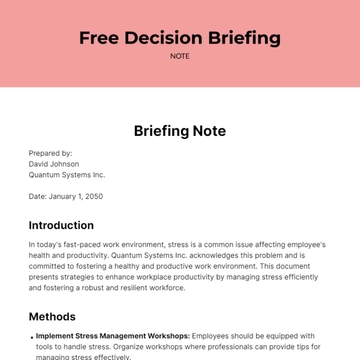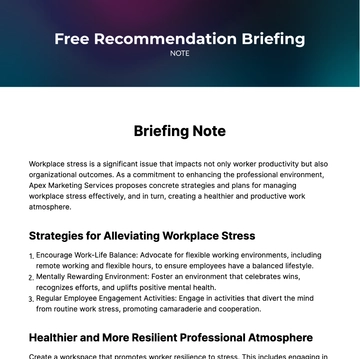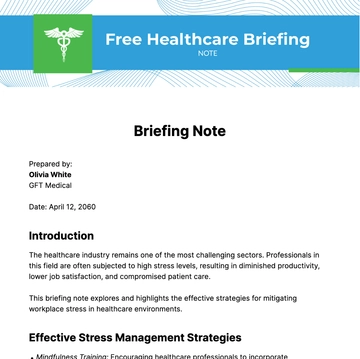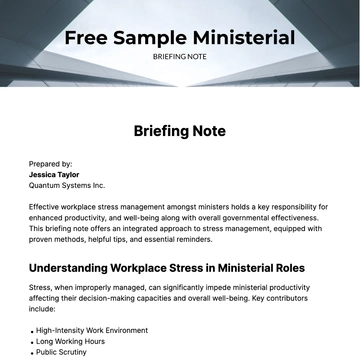Free Government Briefing Note
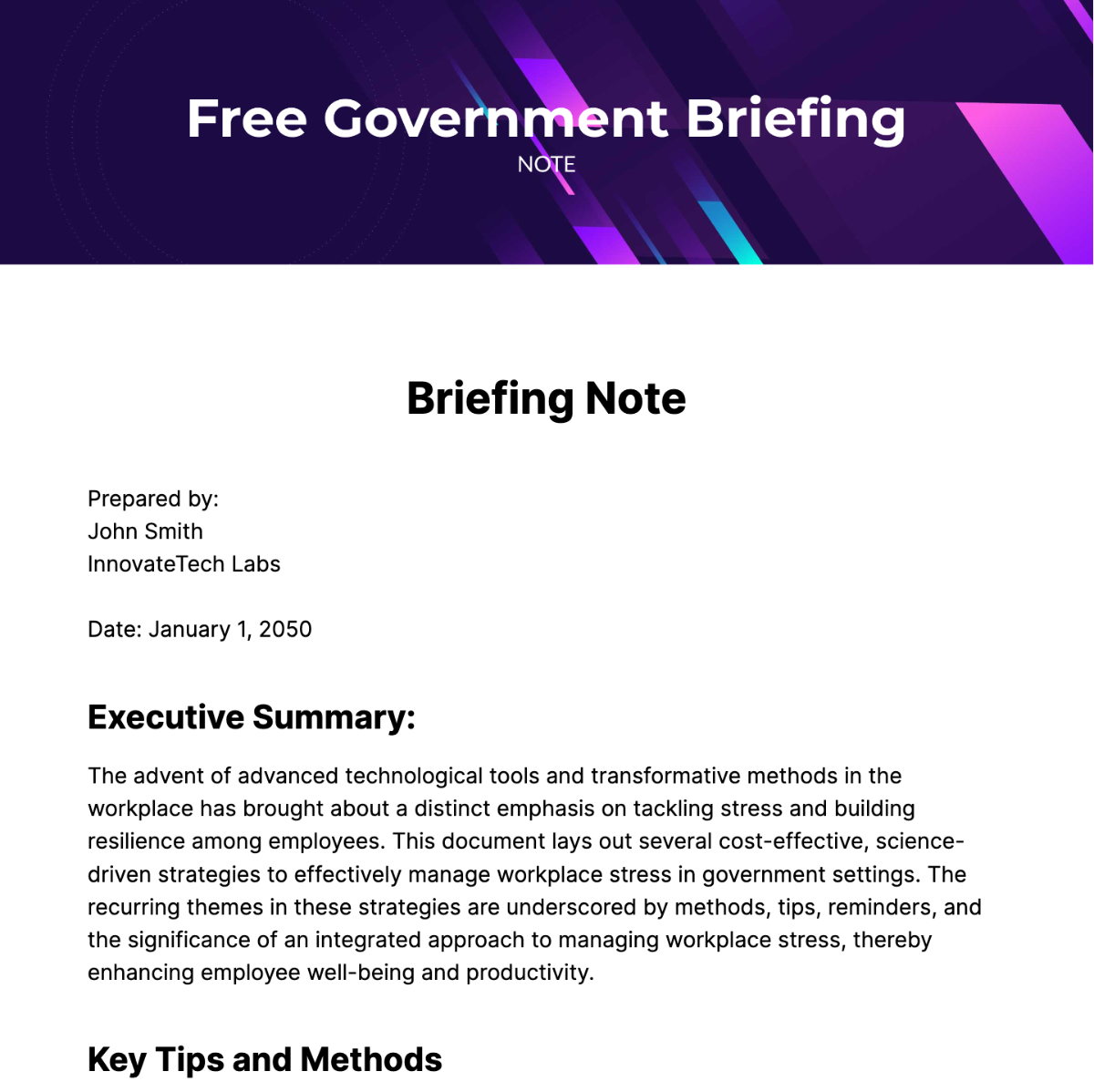
Prepared by:
John Smith
InnovateTech Labs
Date: January 1, 2050
Executive Summary:
The advent of advanced technological tools and transformative methods in the workplace has brought about a distinct emphasis on tackling stress and building resilience among employees. This document lays out several cost-effective, science-driven strategies to effectively manage workplace stress in government settings. The recurring themes in these strategies are underscored by methods, tips, reminders, and the significance of an integrated approach to managing workplace stress, thereby enhancing employee well-being and productivity.
Key Tips and Methods
Implement a comprehensive stress management program. This program should ideally include workshops about the origins and impacts of stress, active relaxation techniques, as well as resilience-building sessions.
Promote a culture of wellness by creating employee support schemes. These can include in-house counseling, periodical mental health checks, and facilitating an environment that encourages open dialogue about stress and mental health.
Utilise technology to improve work-life balance. Encourage the use of digital tools that facilitate flexible work arrangements, virtual collaboration tools, and digital wellness resources.
Reminders
Results will not be immediate. Effective stress management is a long-term strategy that requires consistent and whole-hearted investment.
Each employee is unique. Customize stress management approaches or programs considering the unique needs and receptivity of your employees.
Ensure that the strategies put in place are communicated effectively through the right channels to all staff members for maximum utilization.
Conclusion:
The importance of workplace stress management is paramount to the well-being of employees and, in turn, the overall success and productivity of an organization. It's integral to incorporate the above-listed strategies into an overarching approach towards managing workforce stress and boosting resilience, particularly in dynamic government settings. The cyclical benefits this would provide include enhanced productivity, reduction in employee attrition, and a stronger, healthier work environment.
- 100% Customizable, free editor
- Access 1 Million+ Templates, photo’s & graphics
- Download or share as a template
- Click and replace photos, graphics, text, backgrounds
- Resize, crop, AI write & more
- Access advanced editor
Unlock efficiency with our Government Briefing Note template on Template.net. Expertly crafted, editable, and customizable. Seamlessly refine details in our AI Editor Tool for tailored government communications. Elevate your briefings effortlessly, ensuring precision and impact in every message.
You may also like
- Delivery Note
- Notes Release
- Concept Note
- Class Note
- Hospital Note
- Apology Note
- Credit Note
- Handover Note
- Personal Note
- Excuse Note
- Case Note
- Sample Doctor Note
- Lesson Note
- Appointment Note
- Piano Note
- School Note
- Progress Note
- Business Note
- SOAP Note Templates
- Therapy Note
- Briefing Note
- Summary Note
- Sample Note
- Printable Note
